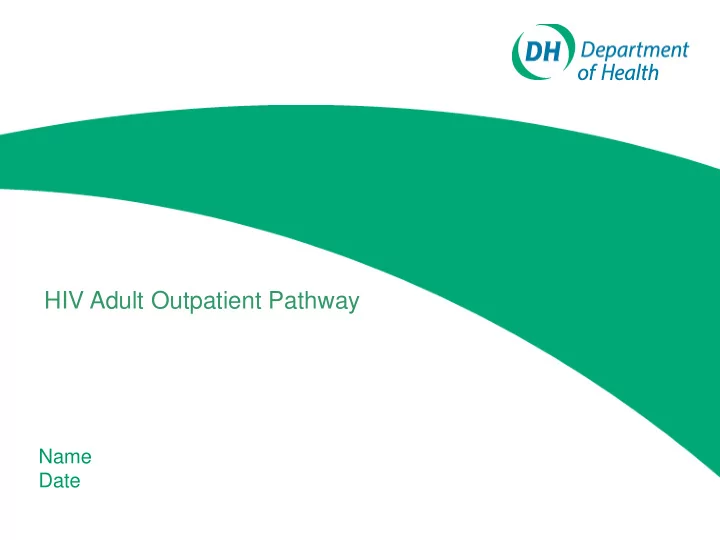

HIV Adult Outpatient Pathway Name Date
Instead of focusing on individual attendances the new currency (i.e. the unit of healthcare to which a cost or price can be attached) moves the focus to providing an entire, integrated, pathway of care and differentiates between the type of patients on that pathway
Why do this (1) • Wanted to ensure a nationally consistent approach to commissioning of HIV services focussing on: – Better outcomes – Improved Quality and Innovation – Holistic Patient Experience • To achieve this a new national currency was developed by the NHS, in conjunction with BASSH and BHIVA.
Why do this (2) • A pathway approach frees providers to innovate and improve the quality of care • A pathway approach increases the focus on integrated care • Improved national information flows gives both providers and commissioners improved performance management data • We all benefit from this new currency, we are all in this together...
Where has the pathway come from (1) • Started December 2007 • Pathway development was clinical led initially by Birmingham, London and Manchester. • Pathway went through a number of iterations and a lot of data validation (across small, medium and large providers and across the whole of England). • National Reference Group formally expanded to include BHIVA, BASSH and more locations.
Where has the pathway come from (2) • Category Validation included: – February 2009 pilot activity/cost collection – Summer 2009 manual data collection from 8 sites covering over 15,000 attendances – February 2011 detailed cost collection from 27 hospitals from across England covering all 10 SHAs and a wide variety of type of provider
Where has the pathway come from (3) • Pathway finalised with 3 categories: – New (first year post diagnosis or first year on ART) – Stable – Complex • Available to download from http://www.dh.gov.uk/health/2012/04/pbr-sexual-health and click on “reports, guidance, methodology” link.
The Pathway Category 1 Category 3 ≈10% ≈10% Newly Category 2 diagnosed Medically ≈ 80% or Complex Newly Stable onto ART Access
HIV Currency - 3 Categories
Category 1 ≈10% 1st year after HIV diagnosis or 1st year of first ART regimen
Category 2 ≈80% Monitoring stable patients not on ART or stable on ART > 1 yr
Category 3 ≈10% Complex See next slide for complexities list
Category 3 Complex needs 1. Current TB co-infection on anti-tuberculosis treatment 2. On treatment for chronic viral liver disease 3. Receiving oncological treatment 4. Active AIDS diagnosis requiring active management in addition to ART (not inpatient care) 5. HIV-related advanced end-organ disease 6. Persistent viraemia on treatment (> 6 months on ART) 7. Mental Illness under active consultant psychiatric care 8. HIV during current pregnancy [HARS Data set contains more information than this e.g. Under the care of a social worker]
Any Questions?
Recommend
More recommend